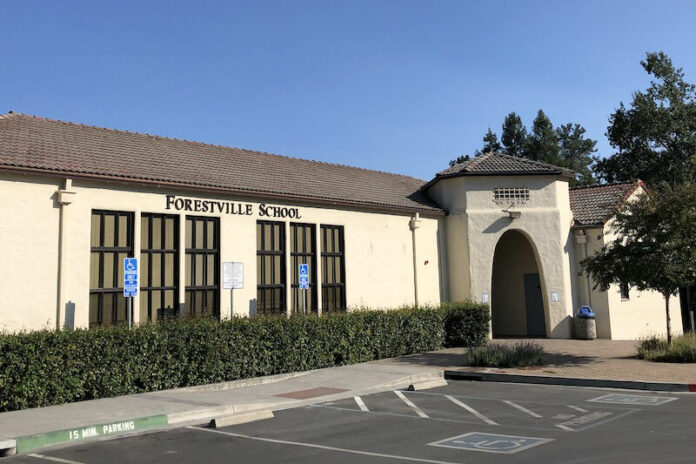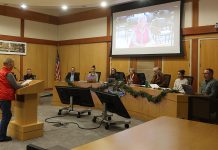A comprehensive study is being prepared to look at various non-binding options
Western Sonoma County is home to 11 school districts, currently serving 6,000 public school students. Each district is unique in size, site and student population profiles. But all of the districts share one characteristic and — they all face declining student enrollment. With fewer students each year comes less state funding and those fiscal impacts can be biggest at the smallest of the 11 districts.
That is why the west county’s high school district, West Sonoma County Union High School District (WSCUHSD), is asking the 10 districts that “feed” students to it to endorse a study on the potential benefits or downsides to unifying as a single K-12 district. Could such a merger save costs without losing education quality? Would small communities such as Occidental, Monte Rio, Guerneville, Forestville and others feel satisfied with giving up local school boards, but perhaps maintaining community oversight in some other ways? How many teaching positions might be eliminated and would any of the 14 K-8 campuses be closed?
These are just some of the bigger questions that will be covered by a unification study now being prepared by the Sonoma County Office of Education and county superintendent Dr. Steve Herrington. The outcome of the study could result in a full unification of all 10 districts, a partial unification of only some of the districts or a “do nothing” plan with the 11 districts continuing to be led by separate elected trustee boards, all responsible for balancing 11 individual budgets.
“We can’t do this open-ended,” Herrington said last week. “You have to look at specific components such as general overall program offerings, H.R. (employment) concerns, special education requirements, business operations (budgets), governance issues and the community process.”
“We’ve actually been talking about this for a couple of years,” said Jeanne Fernandes, chair of the high school board of trustees. “Frankly this all has to do with budgets. We’re drowning right now and it’s not our fault. When we lose a student, we lose $10,000. We can’t continue like that. I just don’t think it is prudent to have 11 different districts in west county, especially in these times of COVID-19 with even more of a fiscal crisis.”
Sonoma County has 40 school districts, ranging in size from the largest, (Santa Rosa city schools), to the smallest, (Horicon and Fort Ross) on the north coast. Herrington thinks other school districts in more urban settings might consider their own unification studies in other parts of the county, but he said the smaller, more rural districts would probably have to continue to exist as is for now.
A similar study was completed for the west county schools in 2006 by then county superintendent Dr. Carl Wong. That study looked at consolidating all the elementary districts plus the high school district into a single district. The west county schools unanimously opposed that study. That era also faced declining student enrollment but the fiscal analysis did not find significant cost savings or a road to healthier local school budgets. But the rash of recent natural disasters, power outages and the ongoing pandemic has current school leaders opening their minds to potential alternatives.
Since the 2006 study was complete, west county schools have lost 12% of overall student enrollment. Enrollment is so low at some schools, that one district this year was anticipating only a single enrolled student at the kindergarten level.
West county districts to be included in the study and their student population are: Fort Ross (15 students), Montgomery in Cazadero (21), Monte Rio (77), Guerneville (279), Forestville (288), Oak Grove (Graton) (875), Harmony (Occidental) (288), Sebastopol (458), Twin Hills (1,157) and Gravenstein (rural south Sebastopol) (767).
Any partial or complete unification would be a multi-year process to allow for teacher and school employee unit contracts to be newly negotiated and for the many district-specific parcel taxes to be reconstituted and possibly put to new registered voter elections. Also, most of the 11 districts have various arrangements with public charter schools, which would be impacted.
Requests for Proposals (RFP) to conduct a study could be ready soon for a bidding process and Herrington said a study might take up to six months to complete. He has set aside up to $65,000 to do a study, a figure he said that could vary widely. The 2006 study, conducted by a San Diego-based consultant cost $19,500.
“We must identify the continuum of academic success across all programs,” Herrington said, listing one of his top priorities. All the schools have federal mandates and specific funds that have to be managed as well as special education programs, classes and curriculum for students with special needs.
Some of the bigger impacts in an eventual unification would fall on teachers, administrators and support staff. A study of the various district salary tables would have to be completed to meet a state formula where the salary tables are averaged and required adjustments are made. Typically, high school teachers are paid higher salaries than K-8 teachers and the lower grade level teachers might benefit from better salary increases than higher grade teachers due to the averaging process. Also, each district has accumulated pension and retirement liabilities that have to be considered and funded into the future.
Each of the 11 districts has a superintendent, principal-superintendent or school site administrator. Most of the schools also have school office staff and some of the larger ones have paid fiscal officers. All of these administrative positions would be subject to cost-saving targets.
There are as many as 55 elected school trustees now leading the west county schools, some being up for re-election this Nov. 3. Under a complete unification scenario in the future, Herrington said a single, large K-8 school district might have a larger board with trustees elected from specific geographic regions of west county to provide for more local and equal representation for all communities.
“People have to stop being selfish (about local control), “ said Fernandes. “This has to be about what’s best for our children. This can’t be a ‘me’ issue; it has to be a ‘we’ issue. Unless we do this study, there is no way to understand the feasibility of the best ways to go forward. We know we can’t keep doing what we’ve been doing.”
Other issues requiring examination would be each district’s deferred maintenance and facility needs, overall student transportation costs, local school bond oversight and how current impact fees from the state might be affected.
If any or all districts support a unification process in the future, impacted property owners and registered voters would have to approve the move. Any single district, such as the high school district, can propose a ballot initiative for unification. Voters or others could circulate a petition and require an election with voter signatures from 25% of the impacted districts.









